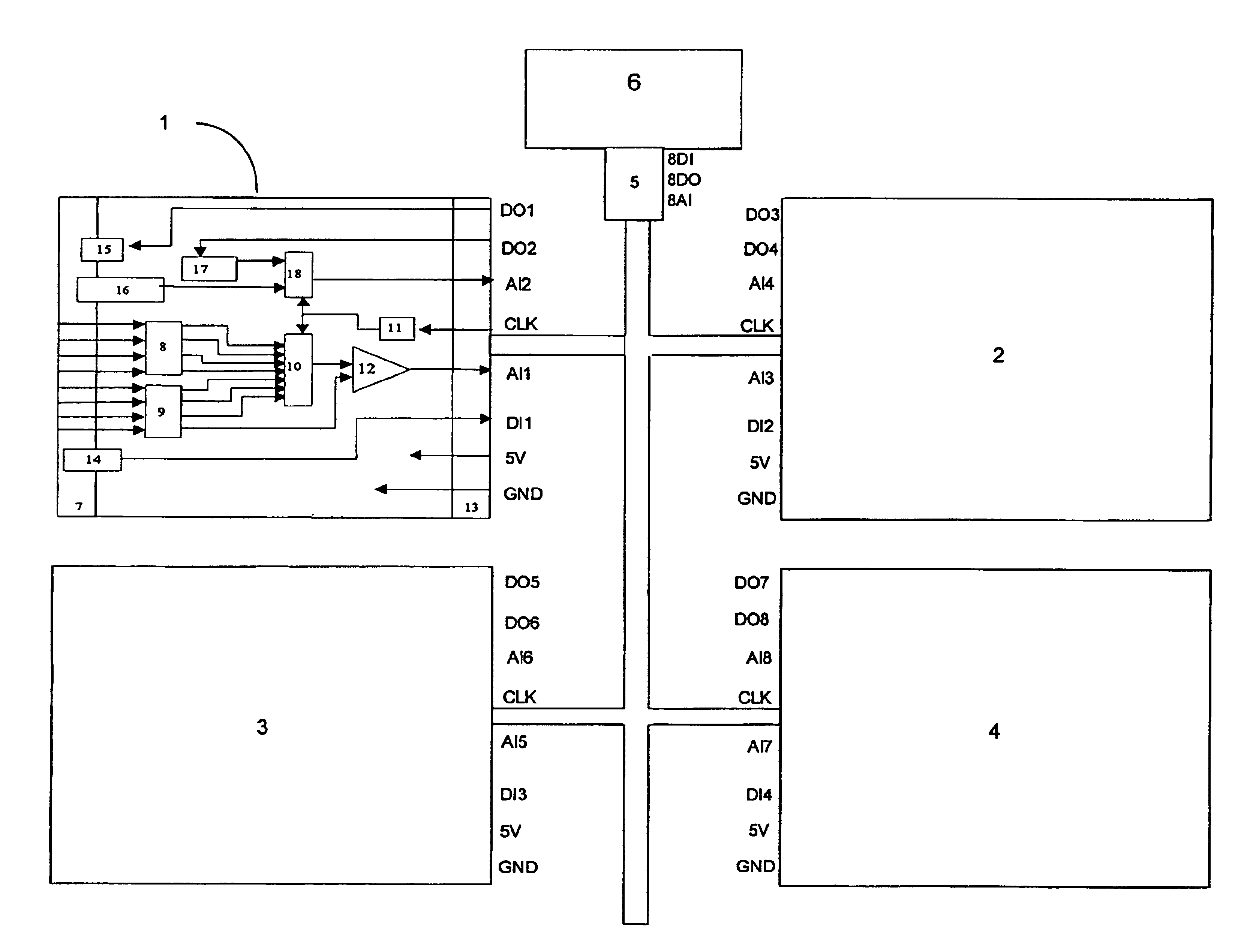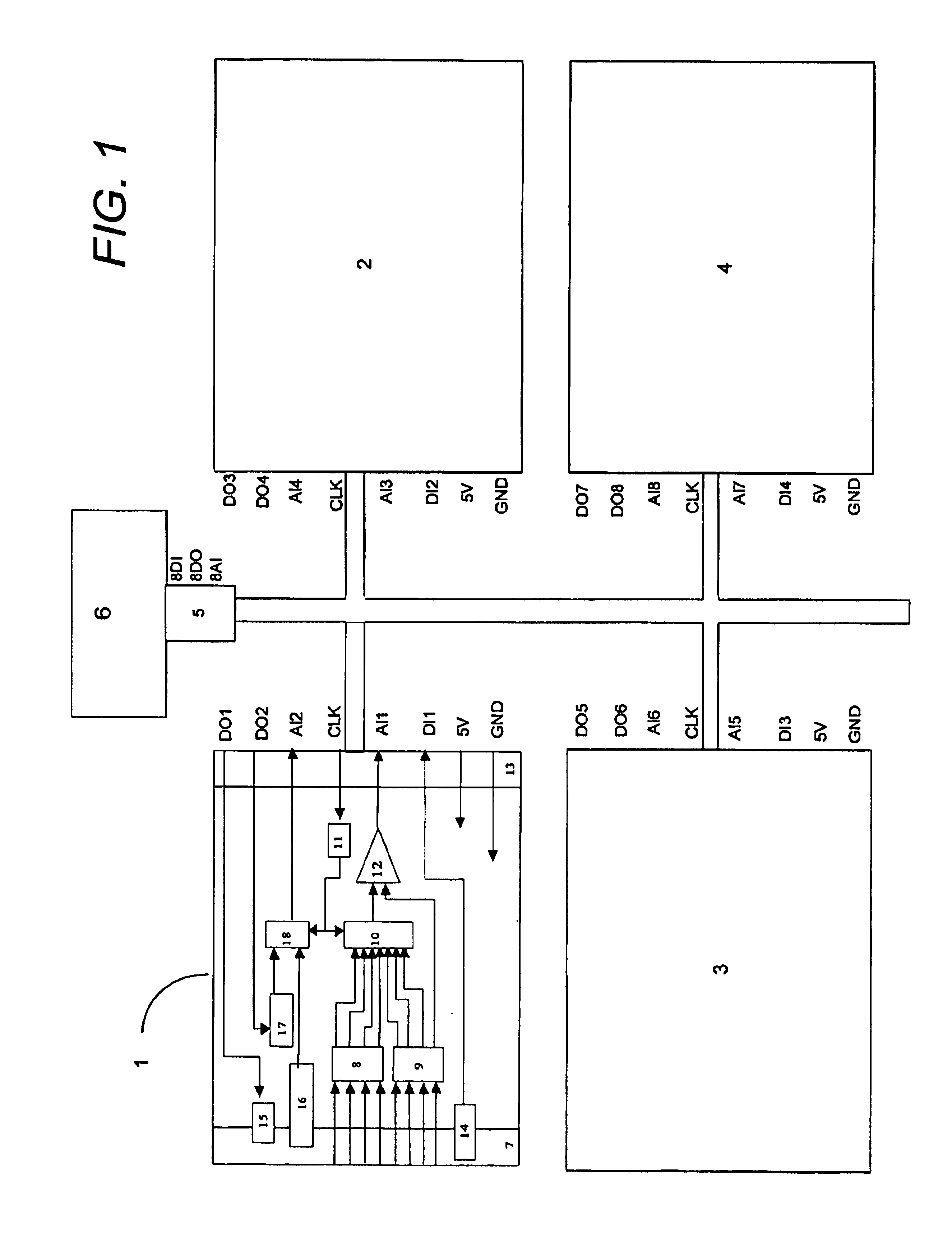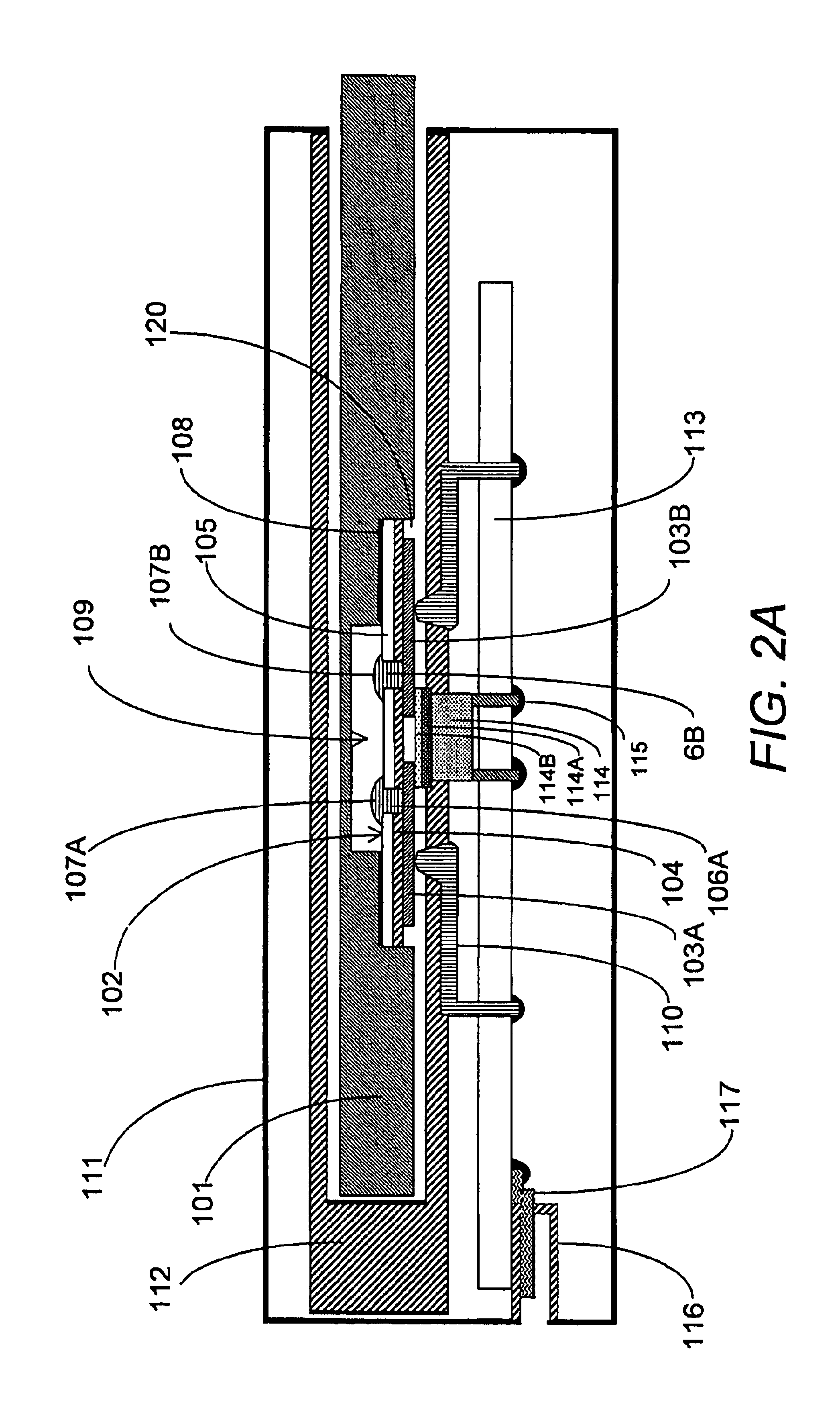Point-of-care in-vitro blood analysis system
a blood analysis and point-of-care technology, applied in the direction of instruments, analysis using chemical indicators, material electrochemical variables, etc., can solve the problems of no economies of scale, no economic benefits, and the cost of blood analysis per patient cannot come at a much higher cost per patient than the cost of the service, so as to achieve less cost, less cost, and more economical set-up
- Summary
- Abstract
- Description
- Claims
- Application Information
AI Technical Summary
Benefits of technology
Problems solved by technology
Method used
Image
Examples
Embodiment Construction
FIG. 1 is a block diagram of a preferred embodiment of a point-of-care in-vitro blood analysis system in accordance with the invention The blood analysis system according to this embodiment of the invention consists of an array of card readers 1-4 for connection to a general-purpose computer. The card readers and companion diagnostic cards are based on modified smart-card and smart-card connector technology. The four card readers 1-4 are connected through a single DAQ card 5 to a general-purpose computer 6. In this specific embodiment, the card readers have multiplexed analog sensor signal outputs. The general-purpose computer is a commercial laptop personal computer, and the DAQ card, also an off-the-shelf component is a National Instruments DAQ card. This DAQ device is a PCMCIA card that plugs into the laptop's PCMCIA socket. It accommodates up to 16 analog inputs. There are only eight analog inputs (8AI) shown in FIG. 1 because only eight channels are used in this embodiment. The...
PUM
| Property | Measurement | Unit |
|---|---|---|
| resistance | aaaaa | aaaaa |
| concentration | aaaaa | aaaaa |
| radio frequency | aaaaa | aaaaa |
Abstract
Description
Claims
Application Information
 Login to View More
Login to View More - R&D
- Intellectual Property
- Life Sciences
- Materials
- Tech Scout
- Unparalleled Data Quality
- Higher Quality Content
- 60% Fewer Hallucinations
Browse by: Latest US Patents, China's latest patents, Technical Efficacy Thesaurus, Application Domain, Technology Topic, Popular Technical Reports.
© 2025 PatSnap. All rights reserved.Legal|Privacy policy|Modern Slavery Act Transparency Statement|Sitemap|About US| Contact US: help@patsnap.com



